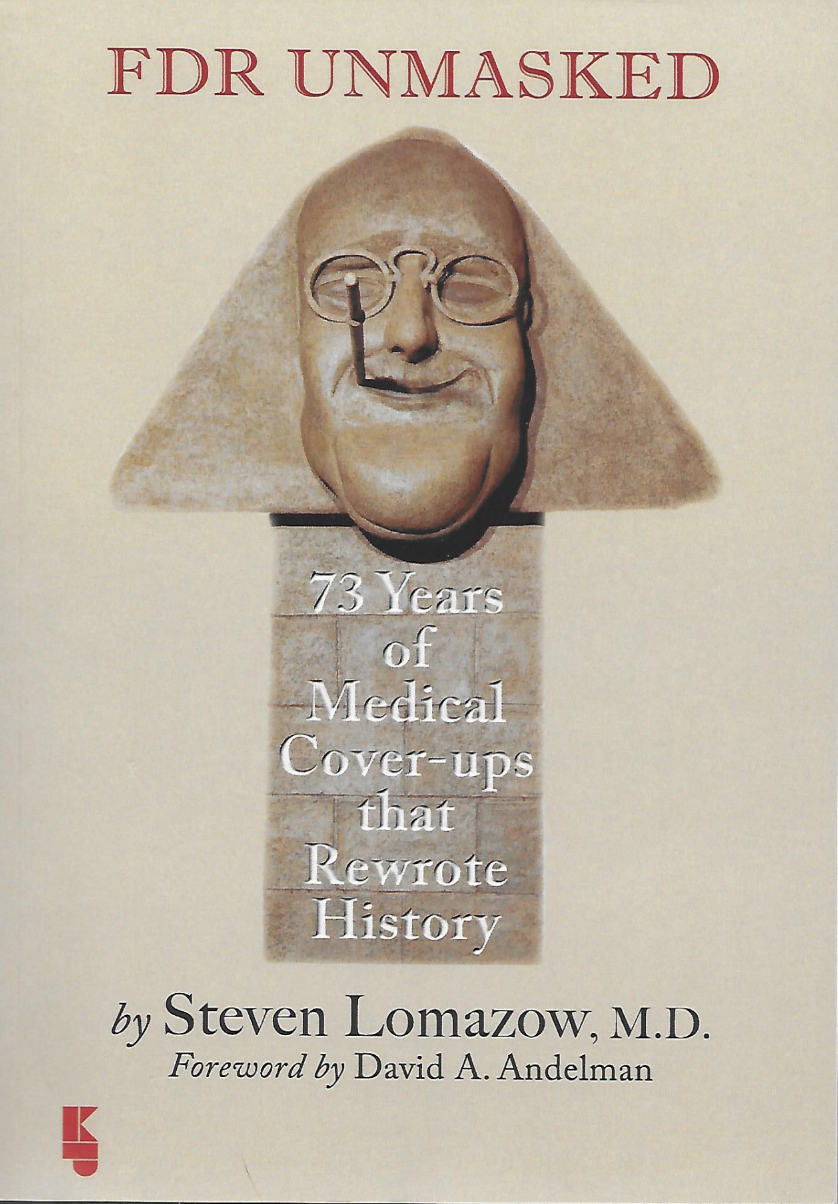 Founded in 1980 |
|
| Steven Lomazow, FDR Unmasked: 73 Years of Medical Cover-ups that Rewrote History, Amsterdam, The Netherlands: Kugler Publications, 2023. ISBN: 978-90-6299-293-5 |
Reviewed by: Vincent J. Cirillo, Ph.D
June 28, 2023
Does the American public have a right to know the truth about their president’s health? Throughout history the White House has come down on the side of the President’s right to privacy. In the most notorious case, Woodrow Wilson’s incapacitating stroke in October 1919 was hidden from Congress and the public for eighteen months until the end of his term.
FDR Unmasked focuses on the health of President Franklin Delano Roosevelt (FDR), but the lessons learned herein apply to all the nation’s presidents. The author has devoted a large part of his adult life to investigating FDR’s medical history, and the cover-up that restricted public knowledge of the extent of the President’s problems. There is much detail about FDR’s long list of illnesses – some potentially fatal. The chief culprits of the cover-up were FDR’s personal physician Rear Admiral Ross T. McIntire, his cardiologist Howard G. Bruenn, and his daughter Anna Roosevelt Halsted. The press also played a role by maintaining a 24-year code of silence about the true extent of FDR’s crippling disability from polio. When the editors of Life magazine asked McIntire if FDR could survive an unprecedented fourth term (1944-1948), McIntire lied by saying the chances were good. As a result, the American public was hoodwinked, and re-elected a dying man. The consequences were disastrous.
The casual reader may wonder why a cover-up was necessary.This is suitably covered in the text. FDR was ambitious and had long pursued the presidency, and would not permit his disabilities to block his achievement of that goal. Lomazow writes (p. 303) all this “does not diminish FDR’s accomplishments – it enhances them.” One of the greatest leaders in our country’s history, FDR is ranked third in the latest Historian’s Survey on Presidential Leadership (2017), right behind Abraham Lincoln and George Washington.
In early February 1945 a very sick FDR met with Winston Churchill and Joseph Stalin at Yalta, a Crimean resort town on the Black Sea. Critical topics were discussed: (1) the partitioning of postwar Europe, (2) the status of Poland, (3) the Soviet Union’s entry into the war with Japan, and (4) the Soviet Union’s participation in the United Nations (UN). FDR was not up to the task. His splendid shrewdness was gone, and “brain fog” made him susceptible to Stalin’s traps. In addition, FDR’s adviser was none other than Alger Hiss, later exposed as a Soviet spy.
Poland did not get free elections, and was transformed into a communist state by 1949. The Soviet Union got back all of the territory ceded to Japan at the end of the Russo-Japanese War (1905) and delayed its declaration of war against Japan until 8 August 1945, only one week before Emperor Hirohito announced Japan’s unconditional surrender. Further, the Soviet Union got veto rights on the UN Security Council, which has since caused endless problems in global politics.
Even after FDR died on 12 April 1945, the medical cover-up continued in full force. In 1946 McIntire published his memoir, White House Physician, which is “a repository of outrageous falsehoods” (p. 273). In 1970 Bruenn published his “Clinical Notes on the Illness of President Franklin D. Roosevelt” in the Annals of Internal Medicine, perpetuating the deception. Bruenn later lied in an interview with historian Doris Kearns Goodwin. Hence, her Pulitzer-prize-winning biography of FDR, No Ordinary Time (1994), amplified Bruenn’s fictitious account of the President’s health.
Throughout this book the author promotes his hypothesis that melanoma contributed to FDR’s demise. First reported in Lomazow and Eric Fettmann’s FDR’s Deadly Secret (2010), this hypothesis remains unprovable in the absence of autopsy-based evidence. While the diagnosis of melanoma is acknowledged as conjectural, oncologists will readily deduce – based on the clinical evidence – that this diagnosis is virtually certain. Lomazow presents compelling clinical evidence that FDR’s seizures and an apparent left-sided visual field defect were attributed to a metastatic lesion invading the right side of his brain. The diagnosis of prostate cancer is more speculative, but plausible.
Caveat lector: The usefulness of this book for scholars is undermined by sloppy copyediting, giving one the impression that the manuscript was unvetted and rushed into print. FDR Unmasked is rife with grammatical errors. Using The Chicago Manual of Style as my guide, I found the footnotes in disarray. For example, a page-long footnote (no. 6, p. 44) is an exact duplicate of the text on pages 47-49. Footnotes 5 and 6 (p. 95) are identical. Italics are often used when they should not be and, conversely, not used when they should be. When referring more than once to the same work, a short title is required. Herein only the author’s name is printed. Without being picky, I counted seventeen instances where idem (same title, same page) should have been used instead of ibid (same title, different page). Lastly, there is no bibliography.
Surprisingly, the illustrations lack identification, captioning, and attribution. Although relevant information seems available in the text, it should not be necessary for the reader to have to search for these details. There is one photograph (p. 270) that is not described anywhere.
Nevertheless, the message of FDR Unmasked is timeless and of great value -- if the discerning reader can overlook its flaws.
Acknowledgment: I wish to thank oncologist Alan J. Lippman, M.D. for his insightful comments on this review.
